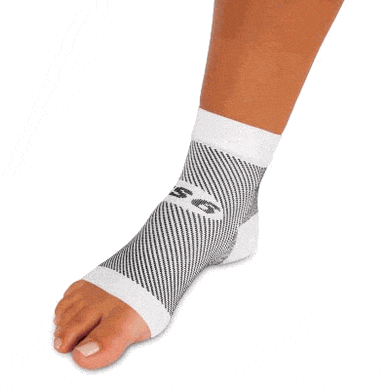Plantar Fasciitis Treatment At Home Exercises for Plantar
Plantar Fasciitis: Symptoms, Treatment and Prevention

In this last article in both part series on Plantar Fasciitis, Brad Walker discusses the normal symptoms of this painful sports personal injury as well as the utmost effective treatments once diagnosed. Brad also describes some very important preventative measures that are crucial to avoid Plantar Fasciitis. A foot injury such as plantar fasciitis generally occurs in a single foot. Bilateral plantar fasciitis is unconventional and tends to be the consequence of a systemic arthritic condition that is extremely rare among sportsmen. Males suffer from a somewhat greater occurrence of plantar fasciitis than females, perhaps therefore of greater weight in conjunction with greater swiftness and surface impact, as well as less flexibility in the ft ..Typically, the victim of plantar fasciitis experience pain upon rising after sleep, specially the first step out of bed. Such pain is firmly localized at the bony landmark on the anterior medial tubercle of the calcaneus. In some cases, pain may avoid the athlete from walking in a standard heel-toe gait, leading to an unusual walk as means of reimbursement. Less common regions of pain include the forefoot, Calf msucles, or subtalar joint.After a limited period of walking with this type of feet injury, the pain usually subsides, but returns again either with vigorous activity or prolonged standing or walking. Around the field, an changed gait or unnatural stride style, along with pain during operating or jumping activities are tell-tale signals of plantar fasciitis and really should be given fast attention. Further indications of the harm include poor dorsiflexion (lifting the forefoot off the bottom) anticipated to a shortened gastroc organic, (muscles of the leg). Crouching in a full squat position with the only real of the feet flat on the floor can be utilized as a test, as pain will preclude it for the athlete suffering from plantar fasciitis, triggering an elevation of the heel due to tension in the gastroc complex.TreatmentTreatment of plantar fasciitis may also be a drawn out and annoying process. A program of treatment should be carried out by making use of someone trained and knowledgeable about the affliction. Typically, plantar fasciitis will require at least six weeks and up to six months of conservative attention to be fully remedied. Should such work not provide relief to the athlete, more ambitious actions including surgery may be looked at.The initial goals of physical remedy ought to be to increase the passive flexion of the foot and improve versatility in the foot and ankle, eventually resulting in a full go back to normal function. Extended inactivity in energetic sports is usually the price to be payed for thorough recovery. Fifty percent measures can result in a chronic condition, sometimes severely limiting athletic ability.As a big amount of time is spent during intercourse during sleeping time, it is important to ensure that the linens at the base of the bed do not constrict the ft ., resulting in plantar flexion in which the foot is bent straight out with the toes pointing. This constricts and in so doing shortens the gastroc organic, worsening the condition. A heat pad positioned under the muscles of the leg for a few minutes prior to increasing may help loosen tension, increase blood circulation in the low leg and reduce pain. Also during sleep, a evening splint may be used in order to carry the rearfoot in a neutral position. This will assist in the recovery of the plantar fascia and ensure that the feet will not become flexed during the night.Careful attention to footwear is critical in avoiding foot injuries. Every effort should be made to wear comfortable shoes with proper arch support, fostering proper foot posture. Should arch facilitates prove insufficient, an orthotic boot is highly recommended. Fortunately, most conditions of plantar fasciitis reply well to non-operative treatment.Restoration times however change enormously in one athlete to some other, depending on time, general health and physical condition as well as intensity of injury. A broad period between 6 weeks and six months is usually sufficient for proper recovery. Additionally, the mode of treatment must be flexible depending on the details of a particular athlete?s accident. Methods that confirm successful in one patient, may not improve the damage in another.Early on treatment of feet injuries typically includes the utilization of anti-inflammatory medication, icing, stretching activities, and heel inserts and splints. Cortisone injections may be essential to achieve satisfactory restoration and retard infection. In later periods of the rehabilitation process, typically after the first week, snow should be discontinued and substituted with high temperature and massage.It is very important that any activity known to produce soreness or stress to the plantar fascia be immediately discontinued, including any activity concerning repeated impact of the heel on a hard surface, particularly, running. Should pain from the accident persist, additional diagnostic studies should be carried out to eliminate other, more exotic causes of heel pain including stress fractures, nerve compression accidents, or collagen disorders of the skin.
Plantar Fasciitis Treatment At Home Exercises for Plantar 's Picture
Related Images with Plantar Fasciitis Treatment At Home Exercises for Plantar
Darco Plantar Fasciitis Sleeve Kansas Foot Center

Home PFTape® Plantar Fasciitis Pain Relief System

10 Ways to Fix Your Plantar Fasciitis—for Good! Natural treatments

What Is Plantar Fasciitis: The Ultimate Guide in 1 minute






0 komentar: